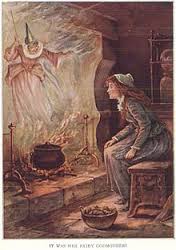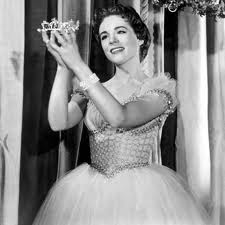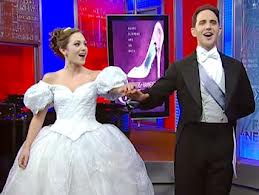
 Imagine: You, your students, chaperones, perhaps other educators, all eagerly surrendering your tickets and retrieving the stubs, slowly making your way to the assigned seated area. It may be some of your students first time seeing a Broadway production, or even live theatrical entertainment! Perhaps some of your students have seen many. You take your seats and lightly chat with one another. The lights dim, and everyone gets that feeling of excitement, like a sudden warmth in their chest, as the story of Cinderella begins, live before everyone.
Imagine: You, your students, chaperones, perhaps other educators, all eagerly surrendering your tickets and retrieving the stubs, slowly making your way to the assigned seated area. It may be some of your students first time seeing a Broadway production, or even live theatrical entertainment! Perhaps some of your students have seen many. You take your seats and lightly chat with one another. The lights dim, and everyone gets that feeling of excitement, like a sudden warmth in their chest, as the story of Cinderella begins, live before everyone.
You might be thinking, “Cinderella, really? Sure, it is a timeless, classic, family-friendly musical, but the kids know the story. Will they want to sit through the musical? How do I create a curriculum around Cinderella?” Depending on the age of your students and how long you teach them each segment, you can create a curriculum that lasts anywhere from a few days to half a year!
Fairy Tales From Past Times With Morals
 The story of Cinderella was first published in 1697 by Charles Perrault in a book which title is roughly translated to Fairy Tales From Past Times with Morals. These fairy tales were modifications of stories that were already well-known, so the story of Cinderella was already one that had been floating around. Many scholars believe Perrault’s stories can be dated as far back as having been in Medieval texts! Perrault’s book was so popular, that even when The Age of Enlightenment kicked in and fairy tales were no longer popular among literary saloons, his tales were still being published in new editions and remained fairly popular.
The story of Cinderella was first published in 1697 by Charles Perrault in a book which title is roughly translated to Fairy Tales From Past Times with Morals. These fairy tales were modifications of stories that were already well-known, so the story of Cinderella was already one that had been floating around. Many scholars believe Perrault’s stories can be dated as far back as having been in Medieval texts! Perrault’s book was so popular, that even when The Age of Enlightenment kicked in and fairy tales were no longer popular among literary saloons, his tales were still being published in new editions and remained fairly popular.
Cinderella: Adaptations and Ages
Perrault’s story was later revived in the 19th century while Romanticism was on the rise and fairy tales were becoming of interest again. The story appeared in the 1812 publication of Grimms’ Fairy Tales by Jacob and Wilhelm (Brothers) Grimm from Germany. The book received criticism as taking children’s stories and making them unsuitable for children. It is actually similar to the Disney version, up until the ball. In the Grimms’ version, at the ball, the Prince had the steps smeared with sap so that Cinderella (in this version, she is called Ashenputtel) would not escape (this is how the golden slipper fell off, it was stuck).
Later, he attempts to find out to whom the slipper belongs. The first wicked step sister actually had cut off part of her heel so that she would fit and the Prince marries her– he finds out what happened and has her killed, however. The second step sister did the same thing, but cut off her big toe– he married her too, found out, and had her killed as well. Alas, he tries the slipper on Ashenputtel, it fits, and they marry. It includes some interesting poetry and verse throughout the story too. However, this is rather grotesque for young children.
With older students, you could discuss some more provocative themes within Cinderella. Look to the controversial observations that Jack Zipes concluded in Why Fairy Tales Stick: The Evolution and Relevance of a Genre. Zipes discusses how the stepmother being forced to care for Cinderella goes against her “natural biological drive,” putting her in an “unnatural” situation, as she is not able to care as much for her own children; Cinderella is essentially a burden to the step mother’s own self-interests.
Zipes also says that the story of Cinderella deals with “issues of child abandonment, family legacy, sibling rivalry, and parental love” (115). Due to conflicting social ramifications, he believes these themes contribute to helping this fairy tale “stick” with people. This could also segue into conversations on the “Cinderella Effect” in evolutionary psychology. Whether or not you or your students agree, it certainly engages interesting classroom discussion, perhaps for students of the high school level and older!
Cinderella: A Cultural Experience

There is some version of Cinderella in every culture, and in various forms of entertainment: musical theatre, plays, operas, ballets, ice show, pantomime, movies, television, verse, novels, books, comic books, songs, jump-rope rhymes, board games and video games! Some of the earliest known Cinderella stories are Rhodopis (Ancient Egypt, later recorded by Strabo the Greek historian), Aspasia (Ancient Greece), or Aseneth (Jewish tale). Cinderella can be found in China (Yeh-Hsien, written by Tuan Ch’êng-shih around 856-860 AD). In Italy, they have Cerentola, in French Cendrillon, in Spanish Cenicienta, in Vietnamese Công Chúa Lọ Lem, in Polish Kopciuszek, in Finnish Tuhkimo, in Afrikaans Aspoestertjie– every culture has some story about this little girl moving from rags to riches, feeling pain and loneliness to feeling love and warmth, overcoming obstacles where it seems otherwise impossible. The story of this girl has inspired the dreams of other little girls and little boys.
The best things you can do as a classroom educator is to learn as much as you can for your curriculum. How is each culture’s Cinderella-story different from another’s? What is the best way to teach each story? Practice what you preach and get creative! Read books and have story time with the young ones, let them create their own books and pictures of what they hear, have puppet shows, sing it, dance it, act it, compare and contrast how each story is different. Students may be more taken to one culture’s story over another. Some students may prefer a Cinderella ballet, or jump rope, or game, etc. The more activities you come up with, the more fun the students will have! But what works for every age group and most students? A Broadway show.
A Timeless Classic

Julie Andrews played Cinderella in the Rodgers and Hammerstein musical world premiere in 1957 for film. Lesley Ann Warren played the star role in 1963 on television, followed by Brandy in 1997. Now, in 2013, Laura Osnes charms the audience with her portrayal of Cinderella onstage, alongside Santino Fontana as the handsome prince. They tell a new story while staying true to the traditional fairy tale we have all come to know and love.
Bring It To Life
Cinderella has enchanted audiences for decades. This show is a fantastical opportunity for you and your students. Bond with these children through story-telling in books, classroom role-playing, music, and perhaps most “magically,” a beautiful, Broadway group experience for everyone
Featured Contributor: Anna Smith
Anna is a graduate of Plymouth State University with a Theatre Arts degree concentrating in Acting & Dramatic Writing. She is currently a teacher at the Bedford Youth Performing Company (BYPC) a non-profit 501c small business company. At BYPC, she currently teaches acting classes, film makers classes, directs spring shows, directs summer camp shows, and participates actively in the “Circle of Giving” program. Circle of Giving is the community outreach service provided by BYPC that helps bring theatre, music and dance to children (and elderly) who may not otherwise have the opportunity.

 Random Item
Random Item